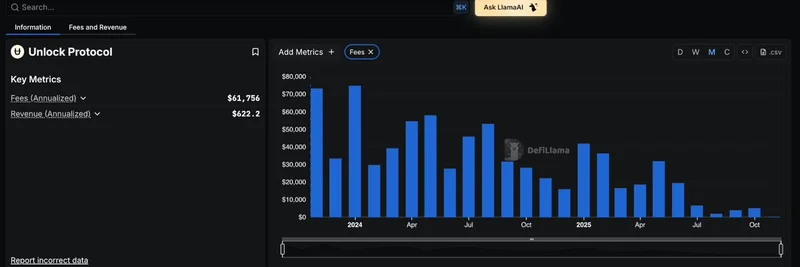The crypto world is buzzing after BSC News dropped a tweet highlighting the details of Union's $U token. If you're into blockchain interoperability and zero-knowledge tech, this is one to watch. The tweet from @BSCNews links to a deep dive on their site, unpacking everything from tokenomics to utilities. Let's break it down in simple terms and see what this means for meme token enthusiasts and broader blockchain practitioners.
What is Union Build All About?
Union Build isn't your typical meme project—it's a serious Layer 1 blockchain focused on zero-knowledge interoperability. Think of it as a bridge connecting different ecosystems like Ethereum, Cosmos, and even Bitcoin layers. It uses advanced tech like zero-knowledge proofs to handle cross-chain tasks securely, without relying on centralized middlemen.
Key pieces of the puzzle include CometBLS for efficient consensus, Voyager for relaying messages between chains, and Galois for generating those all-important proofs. This setup tackles fragmentation in the blockchain space, making it easier for devs to build using languages like Solidity or Rust. Plus, it ties into Bitcoin for enhanced security, which could appeal to those chasing high-stakes plays in the meme token arena where volatility meets innovation.
The network's testnet has already seen over 275 million transfers, showing it's battle-tested and ready for prime time. Now, with the mainnet launch on the horizon, Union's shifting to a proof-of-stake model where $U takes center stage.
The Role of $U Token in the Ecosystem
At its core, $U is an ERC-20 token on Ethereum, but it's designed to fuel the entire Union network. It's not just another speculative asset; its value is tied directly to network activity, like verifying proofs and enabling cross-chain ops. With a genesis supply of 10 billion tokens, $U coordinates incentives for everyone involved—users, devs, validators, you name it.
Why does this matter? In a world full of meme tokens driven by hype, $U stands out with real utility. It powers security, governance, and even liquidity across chains, making it a potential staple for interoperable DeFi and beyond.
Breaking Down the Utilities
Let's get into the nitty-gritty of what $U actually does:
Gas for Operations: $U covers fees in a dynamic market for tasks like proof verification, asset registration, and cross-chain relays. Want priority? Pay a bit more—it's like tipping your barista for faster service.
Staking and Security: Validators stake $U to keep the network honest, and delegators can earn rewards. Thanks to Bitcoin integration, it doesn't need sky-high incentives. Liquid staking via partners like Escher Finance lets you keep assets fluid with eU tokens, usable anywhere.
Governance Power: Hold $U, and you get a say in updates, fees, and more. Voting happens cross-chain, starting with Ethereum, so no need to bridge everything over.
Ecosystem Perks: It's integrated with dApps like Dextr for DEX trading, Stargaze for NFTs, and more. Early stakers can snag juicy rewards—up to 140% in the first year through vaults on Tower DEX.
Governance is straightforward: Proposals need a minimum of 10 $U, or 50 for fast-tracked ones. This keeps things democratic and aligned with community interests.
Tokenomics: Supply, Inflation, and Allocations
Union's tokenomics are built for longevity, not quick pumps. Starting with 10 billion tokens, the initial circulating supply is about 1.92 billion (19.19%). Inflation kicks off at 6% annually, dropping 10% each year until it hits a steady 2%. No fixed staking targets here—flexibility is key.
The allocation pie is sliced thoughtfully:
- Community Incentives (12%): 4% for airdrops and testnet rewards, fully vested right away. Another 8% for future programs, like turning testnet points into $U.
- Ecosystem Fund (14.1%): Grants and dev support, with 40% unlocked at launch and the rest vesting over two years.
- DAO Treasury (12.5%): Community-governed, partial unlock at TGE, vesting over three years.
- Foundation (20%): Ops and partnerships, similar vesting.
- Investors (21.4%) and Contributors (20%): Locked with cliffs and gradual releases to prevent dumps.
Nearly 60% goes toward community and growth, which is a solid nod to decentralization. Vesting schedules, including one-year cliffs for big holders, help stabilize the market.
Airdrops and Incentives: How to Get Involved
If you're hunting for airdrops, Union's got you covered with 4% of supply earmarked for genesis drops and testnet participants. Check for eligibility soon—the token generation event is approaching. Future incentives might convert your testnet experience points into $U, so if you've been active, keep an eye out.
Staking vaults offer high yields early on: Deposit $U, get eU, stake via Babylon, and enjoy liquidity pools. Withdrawals are flexible, with options for quick or secure paths. Programs like U Combinator are incubating new teams, and NFTs like Wandering Whale Sharks add bonus points for engaged users.
Community Reactions and What's Next
The tweet sparked positive vibes on X, with folks calling the tokenomics "solid" and "bullish." The 10B supply, community focus, and Bitcoin ties are big draws. Earlier leaks stirred speculation, but the official drop clarified everything post-funding.
As mainnet rolls out, expect more on claims, allocations, and how $U shapes cross-chain meme plays. Whether you're a builder or trader, this could bridge the gap between serious tech and viral tokens. Stay tuned via BSC News for updates, and follow Union on X @union_build to join the conversation.
In the fast-evolving world of blockchain, projects like Union remind us that real utility can coexist with community-driven hype. If $U catches on, it might just become the next big thing in interoperable assets.



